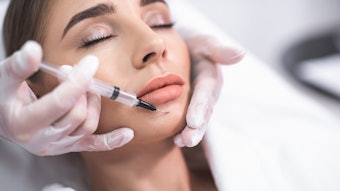
An experimental research study led by Oliver J. Smith, PhD, titled "An Evaluation of the Effect of Activation Methods on the Release of Growth Factors from Platelet-Rich Plasma" (Journal of Plastic and Reconstructive Surgery, February 2022), investigated whether different methods of platelet-rich plamsa (PRP) activation affected growth factor release kinetics over time.
The researchers ultimately discovered that the activation of PRP does not significantly improve growth factor secretion.
Related: The CuraCator Device Helps Control the Application of Topical PRP
Researchers processed PRP from 20 healthy volunteers (12 men and 8 women). The experiments were split into two stages with 10 volunteers each, and three PRP preparation methods for a total of six different preparation methods including:
- control (nonactivated)
- activation with calcium chloride
- activation with calcium chloride and ethanol
- activation with calcium chloride and ethanol at 4°C
- activation with calcium chloride and ethanol with vitamin C
- activation with calcium chloride and ethanol with vitamin C at 4°C
The analysis of the samples was conducted over 24 hours only to avoid the use of culture media. At one, four and 24 hours, a minimum of 0.13 ml of PRP supernatant was extracted and frozen at -80°C. Analysis of the supernatants was conducted within two weeks of the extraction.
Growth factor quanitification was performed from VEG, IGF-1 and PDGF-AB using Quantikine enzyme-linked immunosorbent assay according to the manufacturer's instructions (R&D Systems, Minneapolis, MN).
Related: Ideal PRP Preparation for Female Pattern Hair Loss
They found that calcium chloride-activated PRP produced significantly more insulin-like growth factor at one hour compared to cold and vitamin C PRP, and calcium chloride plus ethanol produced significantly more at 24 hours compared to vitamin C PRP.
Activation with calcium chloride and ethanol with or without cold temperature produced a gradual PDGF release as opposed to calcium chloride alone, which caused higher PDGF within four hours. There were no significant differences between groups for VEGF, although calcium chloride and cooled PRP approached significance compared to vitamin C PRP.
Related: [Review] Treating Melasma with PRP
Despite the differences in the release times, the authors concluded that activation of PRP does not significantly improve growth factor secretion, which is made worse by the addition of vitamin C. Also, ethanol did not negatively impact growth factor production and may offer a more gradual release.











